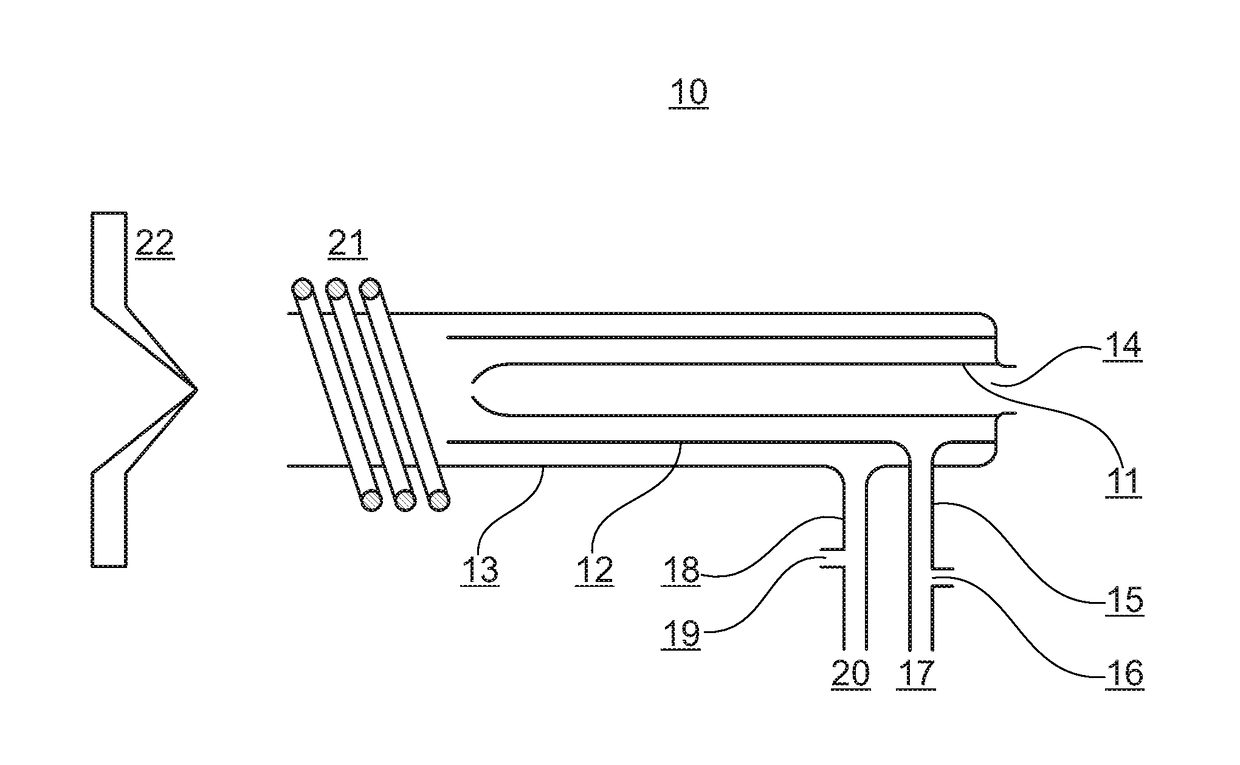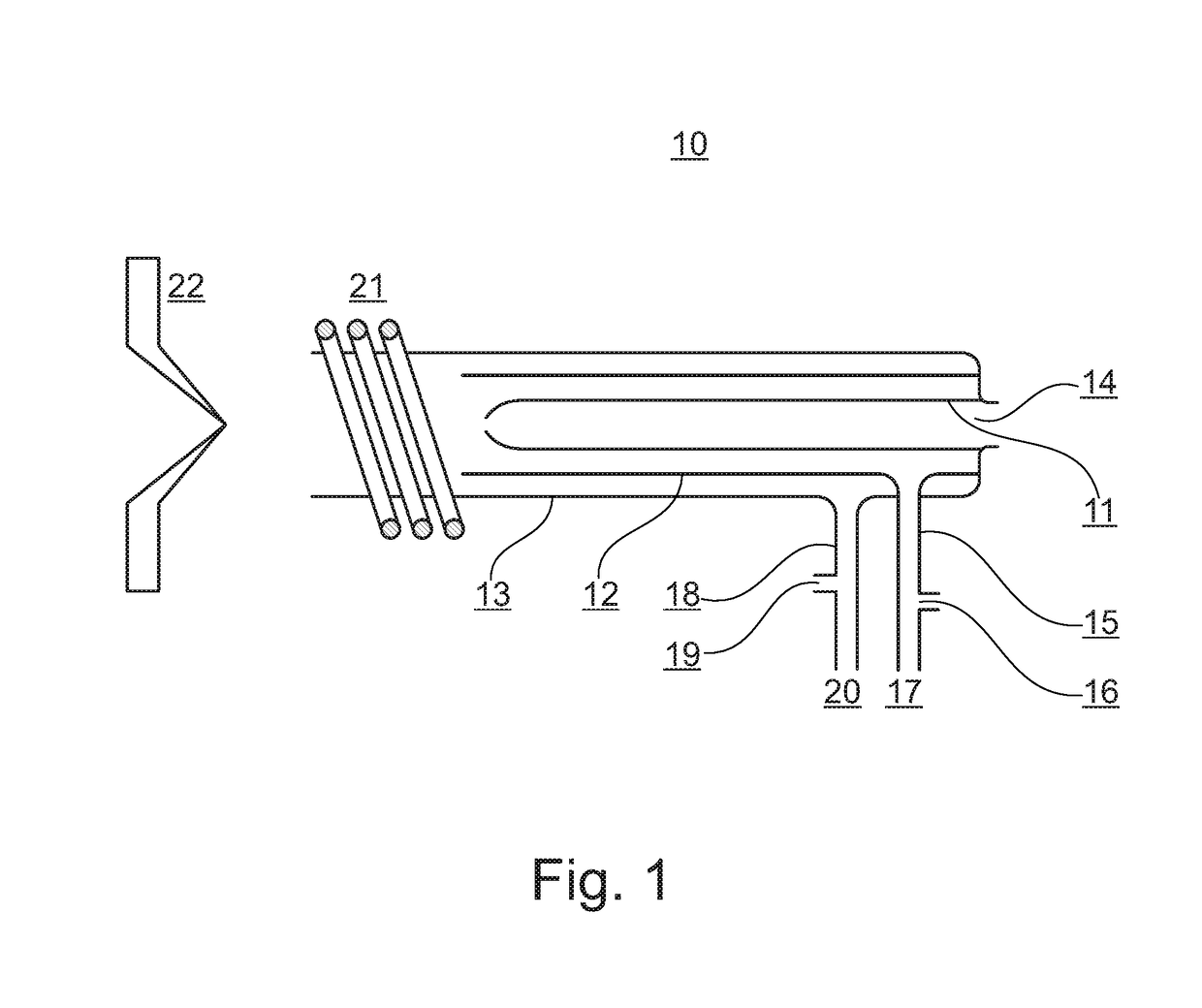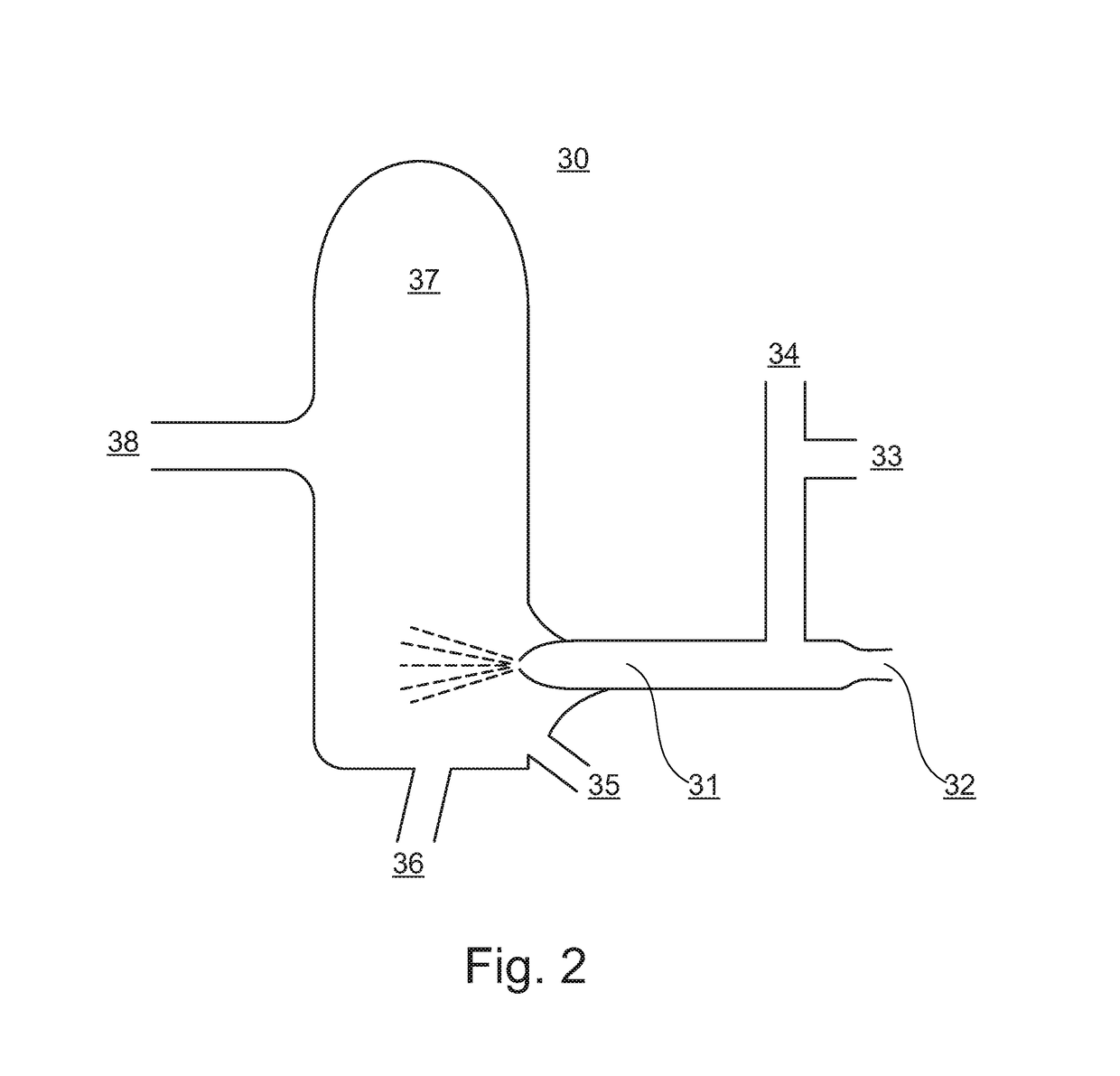Methods in mass spectrometry using collision gas as ion source
a collision gas and mass spectrometry technology, applied in the field of mass spectrometers, can solve the problems of limiting the attainable precision and accuracy of analysis, adding contamination to samples, and isotopic fractionation of analyte to be extracted, so as to improve the control of the phase volume of the ion beam, the effect of high transmission
- Summary
- Abstract
- Description
- Claims
- Application Information
AI Technical Summary
Benefits of technology
Problems solved by technology
Method used
Image
Examples
example 1
[0084]This experiment is designed to determine titanium (Ti) isotopic abundances in a sample containing titanium and chromium (Cr). Of specific interest is the abundance of the 50Ti isotope. In this example the sample is directly introduced into the ICP ion source by laser ablation so there is no opportunity to separate Ti from Cr before the analysis and all the specificity in the analysis has to be achieved in the mass spectrometer. This is problematic as the 50Ti isotope has isobaric interferences with 50Cr which must be resolved or corrected for in order to achieve an accurate determination of 50Ti.
[0085]The experiment comprises two parts, first using the mass filter to permit a specified mass range into the collision cell, introduce oxygen gas into the collision cell in order to form TiO adduct ion in a mass shift reaction and then mass analyse the adduct ions to determine the isotopic abundance of 50Ti and / or a ratio of 50Ti with another Ti isotope. In the second part the mass ...
experiment details
[0086]For the first part the sample is introduced via laser ablation to the Ar plasma ion source of the instrument to produce Ti+ and Cr+ ions. As Cr isotopes have isobaric interferences to the target 50Ti isotope these species must be separated in the mass spectrometer. Then use is made of the chemical resolution that can be achieved with the collision cell and introduce oxygen gas into the collision cell. The selective reactivity of the different elements to preferentially promote Ti+ away from interfering Cr+ is exploited by forming TiO+ from the sample Ti+ and O2 gas. As this reaction is orders of magnitude more efficient for TiO+ compared to CrO+ the Ti species can be successfully separated from Cr in the mass spectrum. The resultant TiO species formed in the collision cell is now present at mass 62-66 in the copper and zinc spectrum and this can be measured in the downstream mass analyser. To avoid a need to make a complicated correction of the potential presence of copper and...
example 2
[0092]This experiment is designed to determine the site specific isotope composition of carbon isotopes in a propane molecule. In this experiment ions are generated in the ICP ion source and extracted from the plasma. The first mass filter is used to select only the 40Ar+ ion which is an intense ion beam and transmit this into the collision cell. Through the gas inlet of the collision cell we introduce the propane analyte gas. Propane is a saturated alkane molecule with a three-carbon chain. Using an accelerating electrode located before the collision cell, the ion energy is controlled of the incident 40Ar+ ion which interacts with the propane molecule causing fragmentation and ionisation of the molecule along the C1 to C2 bond. Thus the charge neutral propane molecule with three carbons and 8 hydrogens is split into two fragments one of 1 carbon and 3 hydrogens and a second of 2 carbons and 5 hydrogens.
[0093]These molecular ion fragments then exit the collision cell and may be mass...
PUM
 Login to View More
Login to View More Abstract
Description
Claims
Application Information
 Login to View More
Login to View More - R&D
- Intellectual Property
- Life Sciences
- Materials
- Tech Scout
- Unparalleled Data Quality
- Higher Quality Content
- 60% Fewer Hallucinations
Browse by: Latest US Patents, China's latest patents, Technical Efficacy Thesaurus, Application Domain, Technology Topic, Popular Technical Reports.
© 2025 PatSnap. All rights reserved.Legal|Privacy policy|Modern Slavery Act Transparency Statement|Sitemap|About US| Contact US: help@patsnap.com



